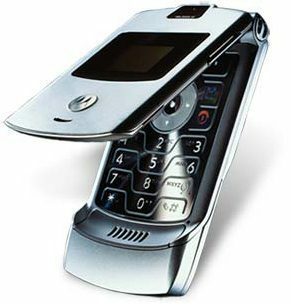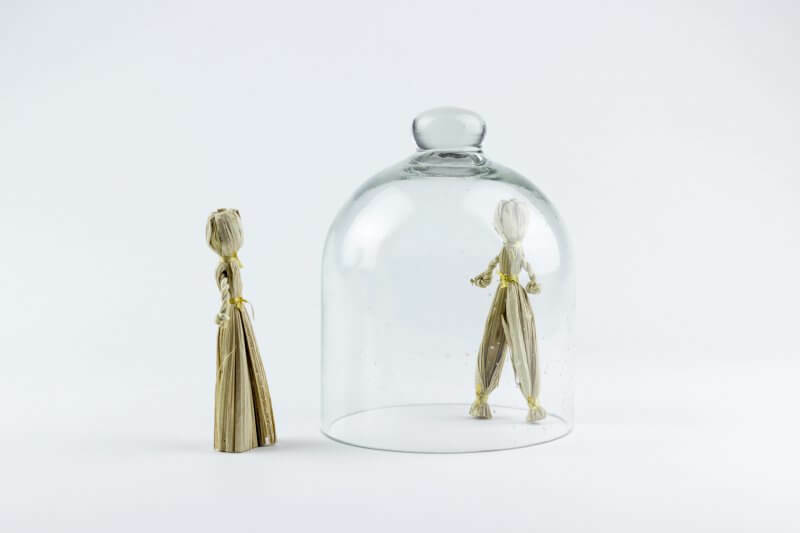Example of Direct and Indirect Object
Spanish Classes / / July 04, 2021
The direct and indirect object are different types of complements of a sentence. Specifically, they have the function of complementing what the verb expresses. Sentences are made up of a subject (it can be a person, object, idea, concept, animal), a verb (an action, a state or movement performed by the subject) and different complements that add information to the action performed by the subject.
Plugins have different functions within the sentence, which vary depending on the plugin type: they specify the action to report on who or what is involved in said action (object or direct object), they tell us what, who or Who are the recipients or recipients of the action (object or indirect object), they can also tell us where it is carried out the action (circumstantial complement of place), when the action is performed (circumstantial complement of time), among others functions.
What is the object or direct object?
It is called direct object or direct object to the part of the sentence that receives the action of the verb; indicates on what or on whom this action falls directly
. There is a type of verbs, called transitives, that by themselves do not fully express an idea; they need a direct object that adds this information to the verb and specifies exactly what it refers to. Transitive verbs are those that can have a direct object. For example, the transitive verb to bite. In the sentence "The child bit" the idea is not complete. A direct object could be added to indicate what the child bit: “The child bit the toy”. Another example is the transitive verb prepare. This verb needs a direct object that specifies what is prepared: “The cook prepares a cake for the party".The direct object answers the question: what + verb?; that is, for example: what did he buy? What did they study? What did he give away? What did he break down? The answer to these questions is the direct object of the sentence. As already said, this completes the idea of the verb by informing us on what or who the action falls on.
Let's see some examples:
- The girl dressed (verb) to the wrist (direct object) with a dress.
The transitive verb wear requires a direct object to complete the idea: what did she wear? The action falls on the direct object to the wrist.
- Mario sell (verb) A car (direct object).
The transitive verb to sell requires a direct object to complete the idea: what does she sell? The action falls on the direct object A car.
- Robert I'm listening (verb) classical music (direct object).
The transitive verb hear requires a direct object to complete the idea: what did you hear? The answer to this question is classical music.
That is why en many cases transitive verbs are accompanied by a direct object to complete the idea, as in the previous examples. In other cases, the direct object does not appear explicitly but it can be understood that it can be added. That is, the presence of it is implicit, as in the following example:
- Already I searched among my things.
The verb search is a transitive verb that requires a direct object to complete the idea: search for what? In this sentence the direct object does not appear but it could be present to complete the sentence: “I already searched your glasses among my things ”.
The direct object can be replaced by the unstressed pronouns lo, la, los and las. These pronouns always function as a direct object within the sentence. For example:
- The girl dressed to the wrist.
The girl the She dressed.
- Mario sells A car.
Mario sells it.
- Roberto listened classical music.
Robert the I'm listening.
How is the object or direct object formed?
The direct object or direct object can be made up of the following elements:
1. By a noun phrase. That is, one or more words whose core is a name or noun. This can be accompanied by an article or other words that complement it. Examples:
- My brothers saw an action movie at the cinema.
- The boy made a mess his shoes of mud.
- Mario awarded To his dog with a cookie.
2. By a pronominal phrase. That is, by one or more words whose nucleus is a pronoun.
Direct object pronouns can be: me, te, nos, se, nos, lo, la, los, las, this, that, that, that, some, someone, something, among others. These pronouns refer to that on which the action of the verb falls. Examples:
- I went to the store and bought something.
This pronoun answers the question: what did I buy?
- It I found out doing a mischief.
This pronoun answers the question: what did I discover?
- The I invited my house to eat.
This pronoun answers the question: what did I invite?
3. By a prepositional phrase with the preposition a. That is, by one or more words whose nucleus is the preposition to.
To verify that it is a direct object we can substitute the prepositional phrase for the pronouns lo, la, los, las, which are always direct object. Examples:
- Look to the Mrs dressed in white.
The Look.
- Mauro invited to your friends to a party.
Mauro the invited to a party.
- The store topped various items.
The store the finished off.
What is the indirect object or object?
It is called indirect object or indirect object to the part of the sentence that is the beneficiary or receiver of the action established by the verb. That is, this part of the sentence tells us what or who the verb is affecting; This can be positive or negative. The indirect object can be a person, animal, object, concept or idea.
The indirect object or object answers the questions: To what + verb? To whom + verb? or to whom + verb?, according to the sentence. That is, for example: who does he show? Who does he teach? Who did he give? Who did he give to? The indirect object would be the part of the sentence that answers these questions and informs us who is the recipient of the action of the verb.
Let's see some examples of indirect object:
- Leonardo I buy (verb) book (direct object) to your brother (indirect object).
The indirect object answers the question: who did you buy from? "To his brother" is the part of the sentence that is the recipient or receiver of the action (I buy).
- The mother read (verb) a fantastic story (direct object) to his son (indirect object).
The indirect object “To his brother” is the recipient of the action (read). Answer the question: who did you read to?
- Luis inflated balloons (direct object) to the kids (indirect object).
The indirect object answers the question: who did it inflate? The answer, "to the children", corresponds to the recipient of said action.
How is the object or indirect object formed?
The indirect object can be formed in two different ways:
1. By a prepositional phrase with the preposition a. That is, the indirect object is made up of one or more words whose nucleus is the preposition to.
To verify that it is an indirect object, we can substitute the prepositional phrase for the pronouns you or them. These pronouns always function as an indirect object. This is important since, as already mentioned, there are also prepositional phrases with to that function as a direct object (these can be replaced by the pronouns lo, la, los, las). Examples:
- I asked to the bank a loan to buy a house.
You I took out a loan to buy a house.
- The students checked the results of the equations to his teacher.
The students you they checked the results of the equations.
Sometimes both the prepositional phrase and its corresponding pronoun (you or them, depending on the case):
- You i asked to the bank a loan to buy a house.
- The students you checked the results of the equations to his teacher.
2. By personal pronouns me, you, him, them, us. These pronouns refer to the subject or subjects who are the recipients of the action that expresses the verb: me (me), te (a ti), le (he or she), nos (us), les (a tú or a they). The pronouns le and les will always function as an indirect object in all cases. Examples:
- I I bought a new music record.
This pronoun is the indirect object of the sentence since it is the recipient of the action; answers the question: who did I buy from?
- You introduced a new friend.
This pronoun is the indirect object since it is the addressee or receiver of the action; answers the question: who did I introduce?
- Us they asked for a new quote.
This pronoun is the indirect object of the sentence since it is the recipient of the action; answers the question: who did they ask?
30 examples of direct object sentences
- Francisco bought a new car.
- Dr. Javier cured to your patient.
- The parakeet sings songs in the mornings.
- I bought him a cell phone to my sister.
- The horse eats grass and forage.
- You owe me a lot of money.
- I never understood the maths.
- I'm thinking many things about Rebeca and Norma.
- Tomorrow i will buy thenotebooks we need.
- My girlfriend did not come to the wedding.
- In the courtyard we saw a black cat.
- Today i bought a new broom.
- The secretary answered the phone.
- The neighbors talk from the party.
- I did a call long distance.
- The students wrote a final essay to pass the subject.
- The mathematician invented new mathematical formulas and theories.
- My sister usually consults your astral sign.
- I saw a boat in the distance.
- The boy bounced the ball.
- The woman accommodated their belongings.
- The chef cooked a dish with different vegetables.
- When I left the house, I closed the door with key.
- I invited to the housewarming party.
- The artist paints some portraits.
- We will reach in the car to Fernando.
- Today i will exercise in the gym.
- They have risen taxes in recent months.
- I downloaded some images from Internet.
- I turned on a scented candle.
30 Examples of Sentences with Indirect Objects
- You have to buy him a phone to Maria.
- Angelina made an invitation to July.
- In the workshop you they fixed the car to my father.
- Let's compare a sandwich to the kid.
- Manuel brought some flowers to his girlfriend.
- You they put green olives to the salad.
- Sandra asked for help to the doctors.
- The doctor gave him a new dose to your patient.
- You i plucked several leaves to the notebook.
- Tea I'll tell the truth when she makes me feel ready.
- Us they sold some tickets to the movie show.
- Manuel cooked the clothes to his brothers.
- Angel you asked a favor to one of her friends.
- To me They got a reservation at the restaurant.
- Gilberto is agile selling insurance tothe clients
- My brother writes books toothers.
- You i will get to my family movie tickets.
- His sister them cooked to her friends.
- In the week I will invite toNorma to the movies.
- You I will celebrate to my mom her birthday with a meal.
- Us they loaned a ball to play.
- I I took a bath with hot water.
- You I assigned one of the best seats in the event.
- My brother you should a lot of money to the bank.
- A seer you predicted her future.
- I designed some images to my friend.
- The lawyer opened a file to your client.
- The host prepared sandwiches and drinks to your guests.
- U.Sus they gave the preference.
- Them I solved several doubts to my classmates.



